After the TARDIS is hi-jacked by a Weeping Angel, the Doctor and her friends arrive in the village of Medderton 1967. Here Professor Jericho performs psychic experiments on a girl named Claire, while the rest of the village search for a missing child. The Doctor soon realises that the Weeping Angels are targeting Claire, who herself appears to be transforming into an Angel. Meanwhile, Yaz and Dan also come in contact with an Angel - transporting them back to 1901.
Across two points in time the Angels' plan begin to unfurl, with the Doctor trapped in an enclosed space with limited options. There's an Angel inside of Claire, and even the Doctor isn't prepared for the offer it's about to give her.
Given the simplicity and realism of their horror it's no surprise that the Weeping Angels became as popular as they did. The idea that every statue around you is just one blink away from coming to get you is exactly the kind of chilling though that would have children and adults alike cowering behind sofas, and its because of that the Angels have continued endure as arguably the only modern Doctor Who monster that can stand comfortably alongside the classics. However it's that same simplicity that could easily prove their downfall, since such an effective concept could easily be bogged down by further information about the species. When we first met the Weeping Angels in Blink they were like a force of nature – a terrifying almost animalistic presence shrouded in mystery. Flesh and Stone/Time of the Angels and later The Angels Take Manhattan expanded upon them further – notably creating the notion of "an image of an Angel becomes an Angel" as well as giving them the means to communicate. These concepts are played with even further in Village of the Angels, the first television story they've appeared in not to be written by creator Steven Moffat.
The Weeping Angels here are far from animals though, at least in the conventional sense. These Weeping Angels are cruel, calculating and almost sadistic in the way they seem to revel in taunting their pray. This is illustrated in a number of different ways throughout the episode, from familiar tropes like an Angel speaking back in the voice of Professor Jericho to more interesting ideas like Angels refusing to move when they could easily take their pray. Village of the Angels takes our existing notions of how the Weeping Angels works and exploits them, turning them from simply predators into a force that think in ways the audience wouldn't necessarily expect. While the twist of them being an extraction squad working for the Division might not be all that interesting, the way it's utilised in the course of the episode certainly can't be faulted.
The Weeping Angels here are far from animals though, at least in the conventional sense. These Weeping Angels are cruel, calculating and almost sadistic in the way they seem to revel in taunting their pray. This is illustrated in a number of different ways throughout the episode, from familiar tropes like an Angel speaking back in the voice of Professor Jericho to more interesting ideas like Angels refusing to move when they could easily take their pray. Village of the Angels takes our existing notions of how the Weeping Angels works and exploits them, turning them from simply predators into a force that think in ways the audience wouldn't necessarily expect. While the twist of them being an extraction squad working for the Division might not be all that interesting, the way it's utilised in the course of the episode certainly can't be faulted.
There's also the question of how effective the whole fast-moving, "don’t blink" visuals of the Weeping Angels can be when used in repeated succession, but Village of the Angels shows that the location proves just as important as the actions themselves. Moving the Weeping Angels into this gloomy little rural town is the perfect scenario for a good bit of gothic horror, while additional imagery such as the Angels viewed from a 1960s black and white television screen proves equally as chilling as well as conjuring the idea of them as classic Doctor Who monsters.
Although the episode could hardly be called "Doctor-light" it is one that relies more heavily on its supporting cast to get the story flowing, and the most important part of this is Claire – previously introduced without context back in The Halloween Apocalypse. Though it seemed as if she was actually meeting the Doctor out of sequence in that scene, it's disappointingly revealed that Claire instead had a vision of the Doctor prior to their meeting, in turn explaining her knowledge on how to combat a Weeping Angel. Her visions of Weeping Angel led to an Angel taking form inside of her, stretching the idea of "the image of an Angel becomes an Angel" and how they can be conjured up to its absolute limits. Perhaps it’s a concept best not thought about too much, because on a visual level it works rather well – the sequence of Claire's ripped drawing coming together to create one (which later burns as the paper is set alight) one highlight among many this episode. The visuals of Claire turning into the Angel were also particularly effective, calling back to and recontextualising Amy Pond's experiences with the creatures. However the Angel in Claire also hides a secret, and it's another one that steers the Weeping Angels toward a more sentient path. A renegade Angel that has fled from the Division, their introduction creates individual thought amongst their ranks – transforming them from pack animals into beings with their own thoughts and factions. Even the Doctor didn't seem aware that an Angel could have such thoughts, further shrouding them in mystery.
Claire may be the centrepiece but there are many other strong characters in the episode too, even if their roles are solely to show off the Angels' abilities. Two such examples are Jean and Gerald, the crotchety guardians of Peggy that fall victim to an Angel's touch twice. One touch will send you hurdling back in time, but a second one proves far more fatal. Meanwhile supporting the Doctor and Claire is Professor Jericho, a military man turned scientist who takes a great interest in Claire before helping defend his house from the Angels' attack. He's a strong character that stands up firmly against the Angels, but at the same time their taunting of his weaknesses and insecurities suggests a far more layered character than the episode conveys otherwise. It's comforting to know that most of these characters aren't dead yet, as it'll be interesting to see what they have to offer in the next episode and just how much they'll play into Flux's larger storyline.
Though separated from the Doctor for the majority of the story there's still a fair bit for Yaz and Dan to do here, they themselves becoming victims of the Weeping Angels only adding to the tension. We might have seen Amy and Rory suffer the same fate all the way back in 2012, but at least then we had the knowledge it was also their exit story. It's through them that we meet Peggy and the mystery of the Angels' actions (particularly why they're happy to leave her alone) build up, leading to the rather obvious reveal of Mrs Hayward being an older version of Peggy. It's curious that Village of the Angels raises more questions than it answers in regards to the village, given that this isn’t a two-part story in the conventional sense. With Yaz and Dan still trapped in 1901 there's still plenty of ground to cover in Medderton, but the story is almost certainly going to have to hurry along so that everything else Flux-related can be covered. Though there aren't any real standout character moments for either companion, their dynamic works well – Yaz continuing to take charge despite their rather hopeless situation while Dan's Northern humour continues to shine through.
It all culminates in an absolute belter of a cliffhanger, where the Doctor realises the full extent of what the Angels have done before becoming one herself. Not only is the visual of the Doctor becoming a Weeping Angel (complete with hands covering face) powerful in itself, but the whole lead up to it shows just how powerless the Doctor is. So much of Flux has already been beyond both the Doctor's control and understanding, but in this episode the Weeping Angels completely run rings around her – going so far as to taunt her before "completing" their mission. The more subdued version of the theme song that plays over the end credits only serves to heighten the shock and tension, even if the mid-credits sequence cuts into it somewhat. Though it goes without saying that the Doctor is going to get out of this somehow, the fact she's completely absent during the next episode preview suggests we might be getting a more Doctor-light episode next.
Weeping Angel shenanigans weren't the only thing going on in this episode though, as interspersed throughout the action was more on Bel's journey across the Flux-ravaged cosmos. This episode saw her land on a planet acting as an apparent haven from the Flux where Azure is tricking people into entering a Passenger form with the promise of sanctuary. Meanwhile Vinder is hot on her trail, with his reunion with his lover and unborn child inevitable. With so much good stuff going on in the main portion of the story all of this feels rather superfluous, even though it's the strongest link to Flux's overarching story that the episode had. The problem is that neither Bel nor Vinder are actually all that interesting, even though their supposed importance to the story is setting them up for greatness. The whole idea of Azure luring victims into a Passenger is all a bit Utopia, albeit much less interesting and starring characters we know next to nothing about. Swarm on the other hand is completely absent this episode, as is the still unexplained Joseph Williamson.
Village of the Angels is another success from Maxine Alderton, who after showing off her horror prowess with the Cybermen last year has now done the same for the Weeping Angels. While such a simple concept runs the serious risk of diminishing returns, Village of the Angels is able to expand upon these now-iconic monsters in a way that positions them nicely as a recurring force in Doctor Who. It's also one cliffhanger that'll definitely go down in Doctor Who history. Its only real flaw is that it works far better as a standalone episode than it does a component of Flux, with many of the wider story's core components pushed aside and very little time left to explain them. Fingers crossed that next week begins to provide some of the answers we so desperately need, as some old favourites return in Survivors of the Flux.
Village of the Angels is another success from Maxine Alderton, who after showing off her horror prowess with the Cybermen last year has now done the same for the Weeping Angels. While such a simple concept runs the serious risk of diminishing returns, Village of the Angels is able to expand upon these now-iconic monsters in a way that positions them nicely as a recurring force in Doctor Who. It's also one cliffhanger that'll definitely go down in Doctor Who history. Its only real flaw is that it works far better as a standalone episode than it does a component of Flux, with many of the wider story's core components pushed aside and very little time left to explain them. Fingers crossed that next week begins to provide some of the answers we so desperately need, as some old favourites return in Survivors of the Flux.




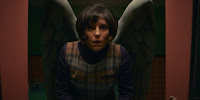
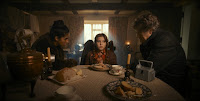


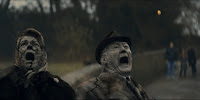
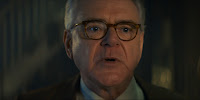
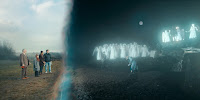



No comments:
Post a Comment